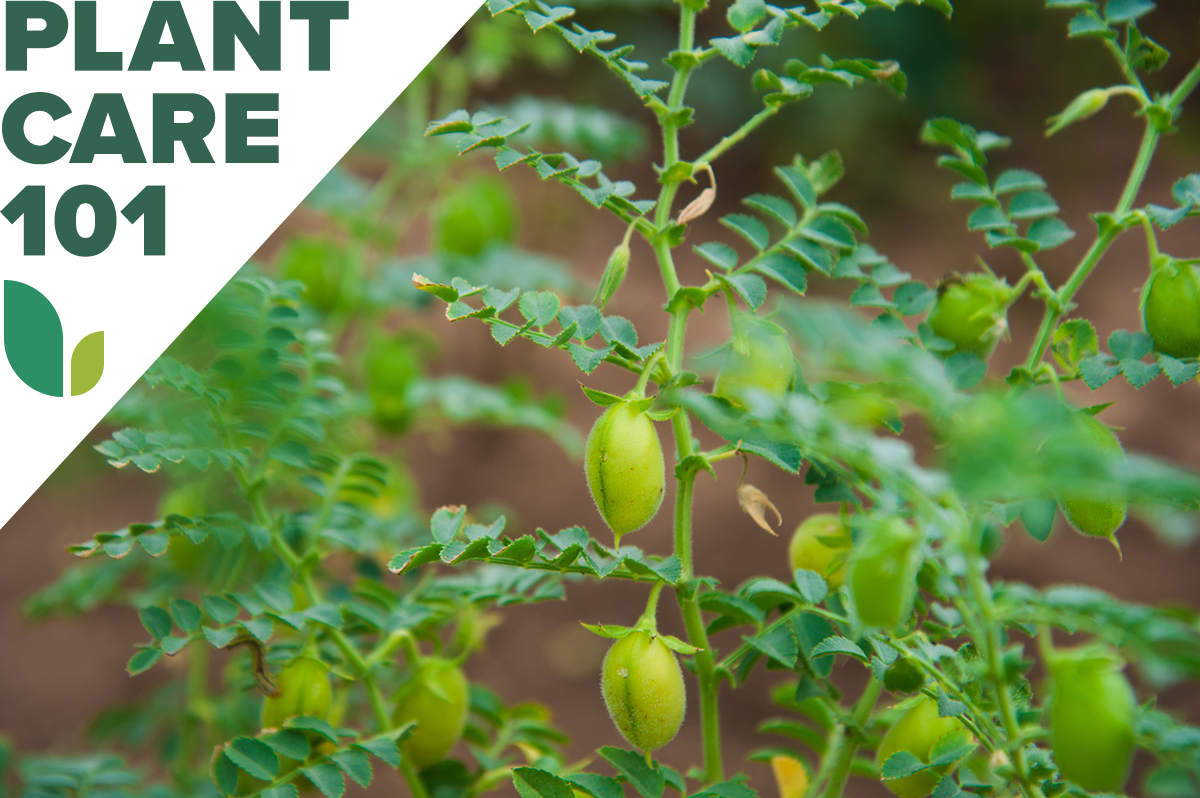

We may earn revenue from the products available on this page and participate in affiliate programs. Learn More ›
Chickpeas—also known as garbanzo beans—are a staple of many Mediterranean, Middle Eastern, and Indian dishes. Most familiar to many is the buttery, nutty flavor chickpeas offer as the key ingredient in hummus. An excellent source of protein and fiber, this legume can provide numerous health benefits, from reducing the risk of type 2 diabetes to supporting brain and nerve system function.
An annual bushy plant with feathery foliage, the chickpea plant is an attractive addition to a home garden that is only moderately difficult to grow. If you don’t already know how to grow chickpeas, it’s worth learning so you can add this cool-season crop to your garden.
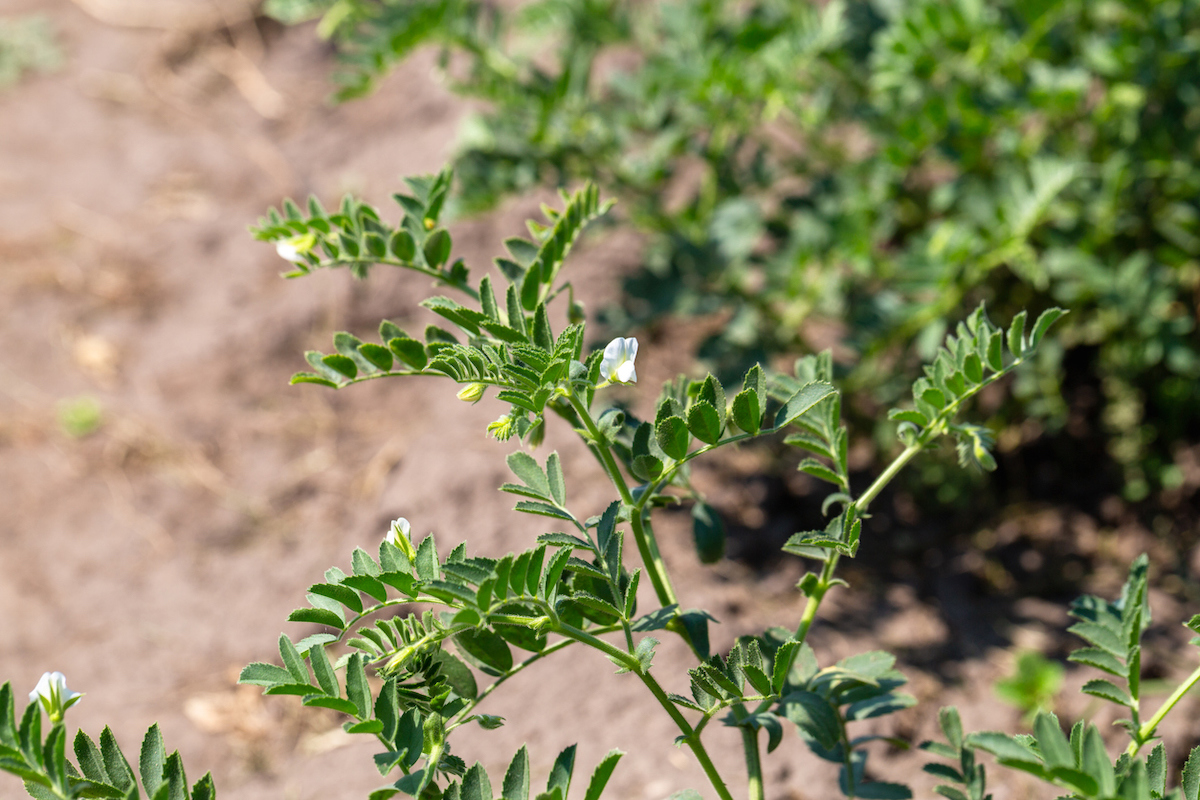
Growing Chickpeas at a Glance
Common Name: Chickpea or garbanzo bean
Scientific Name: Cicer arietinum
Hardiness Zone: 3 to 9
Soil: Well-draining, loamy, and sandy with a 6 to 7.5 pH
Light: Full sun
Water: Keep soil evenly moist
Food: None needed in fertile soil; if used, choose fertilizer high in phosphorus and potassium
Propagation: Seed
Safety: Uncooked chickpeas contain toxins such as lectins; even cooked, they contain proteins that can trigger allergic reactions
Chickpea Characteristics
An ancient crop thought to have originated in South Asia about 8,000 years ago, Cicer arietinum, commonly known as chickpea or garbanzo bean, is an annual legume in the pea and lentil family. Like some tomato varieties, these short, bushy plants are indeterminate—meaning they continue to produce new leaves after they’ve flowered.
Taking about 100 days to mature, chickpeas are a cool-weather crop. Small, bushy plants produce blooms of white, pink, blue, or purple flowers that become the seeds used in many cultural cuisines.
Translations of “chickpea” from Latin to French to English reveal that the name means “pea-pea,” and in German, it is “giggle pea.” Regardless of what it’s called, it’s a vegan, protein-rich, high-fiber, low-calorie food source that provides many nutrients and many health benefits.
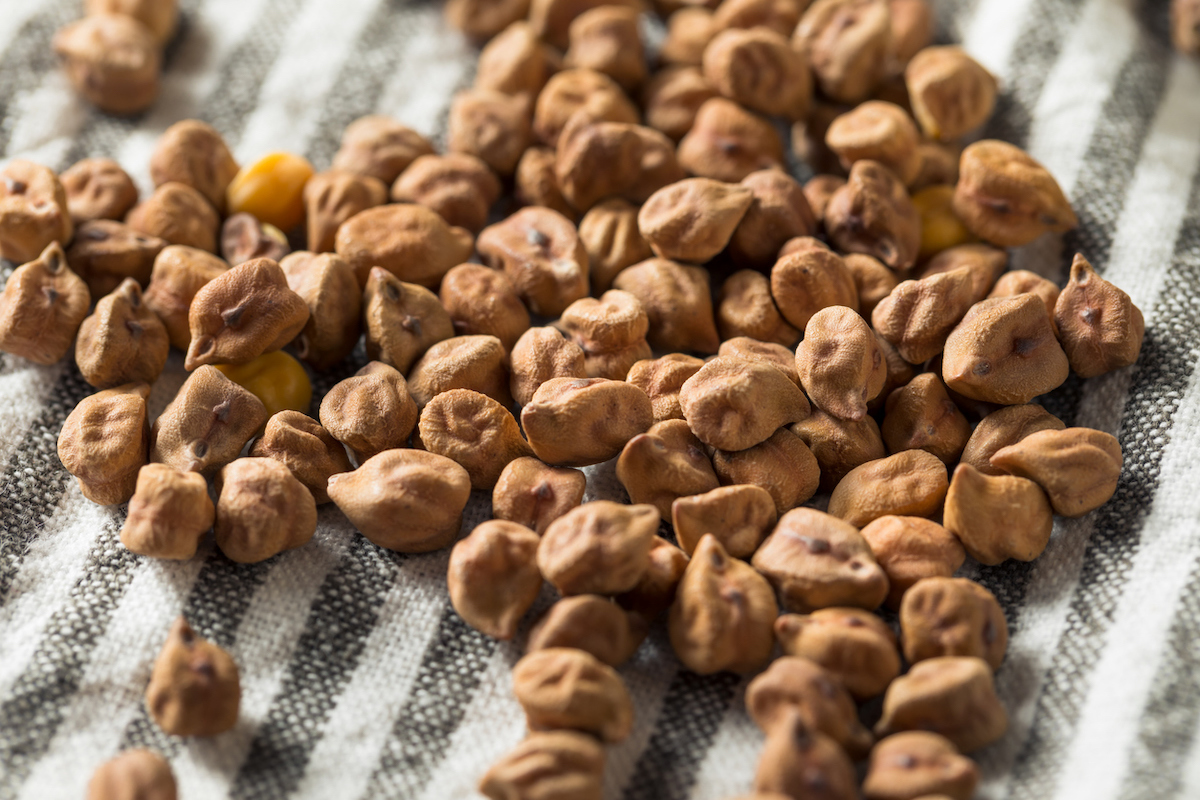
Recommended Chickpea Varieties
There are two main classes of chickpea.
- Desi are small, with a tan or brown pigment to their thick seed coat after developing from pink or purple blooms. They are the most widely produced variety.
- Kabuli can be small or large, with a thin white or beige coat that appears after white blooms. It comes from plants that are taller than desi varieties, although there are large and small kabuli varieties. They mature a week or two later than desi types and usually have a lower yield.
Planting Chickpeas
Chickpea planting and chickpea growing differ little from planting and growing soybeans or snap beans. While not the easiest plant for beginning gardeners to raise, it’s not inordinately difficult to grow chickpeas.
When is the best time to plant chickpeas?
Planting chickpeas should be done once the soil temperature has reached a consistent 50 degrees Fahrenheit, although they can be direct-sown as early as 2 to 3 weeks before the last average frost because they need a long and warm growing season. Although they can be frost-tolerant, garbanzo beans prefer daytime temperatures of 70 to 84 degrees Fahrenheit and nighttime temps of at least 65 degrees Fahrenheit.
Where can chickpeas grow?
Chickpea farming should occur in areas that get full sun and provide “light” soil free from rocks, weeds, and debris. Chickpeas prefer soil rich in nutrients and humus and welcome the addition of compost. However, avoid planting chickpeas in soil that is high in nitrogen unless the soil is amended with potassium and phosphorus, as they are a nitrogen-fixing plant. Too much nitrogen in the soil results in foliage at the expense of pods. Do not plant chickpeas near alliums.
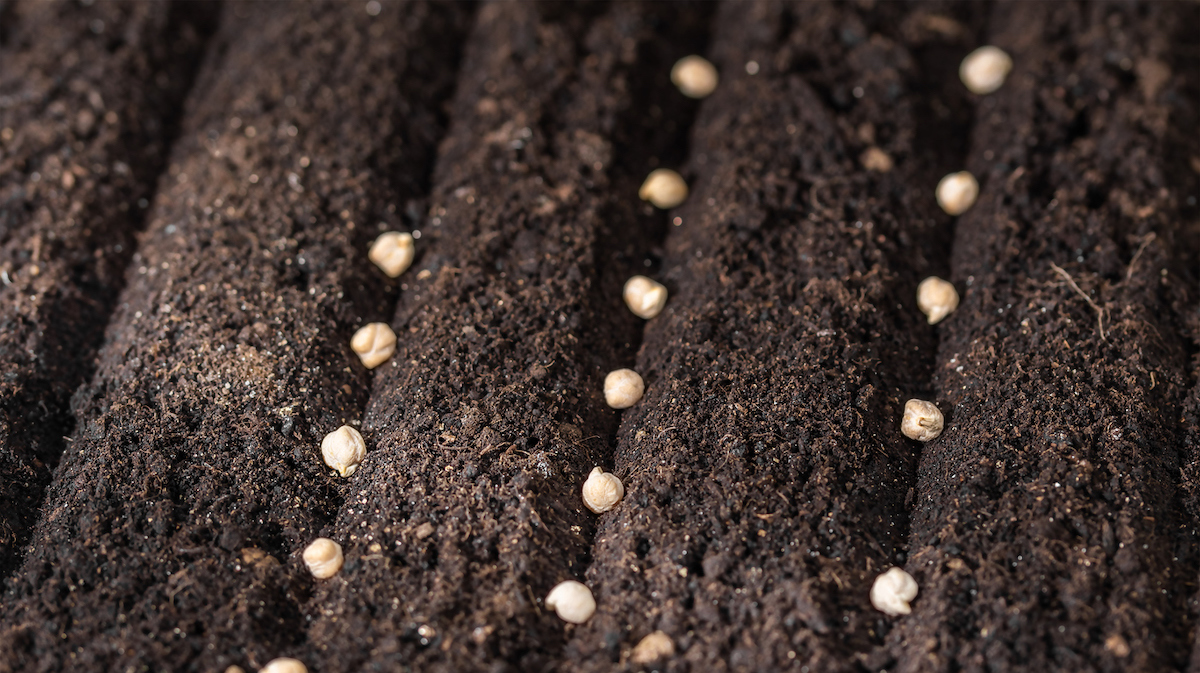
How do you plant chickpeas?
Chickpeas have best success if direct-sown in the garden after danger of frost has passed, although check seed instructions; some can be started 2 to 3 weeks before expected final frost. An alternative is to start chickpeas indoors 2 to 4 weeks before the last average frost date to get a jump on their long growing season. Once the weather is warm enough (at least 65 degrees Fahrenheit at night and at least 70 degrees Fahrenheit during the day), transfer the chickpea seedlings to the garden. Be sure to use care to avoid disturbing their taproots.
For direct sowing:
- Do not soak seeds before planting.
- Apply an inoculant to the seeds to boost output.
- Plant seeds 1½ to 2 inches deep, spaced 3 to 6 inches apart, in rows about 18 to 24 inches apart. Chickpeas can be somewhat crowded; they can support one another.
- Do not water heavily after planting as it can crack the seeds.
Can you grow chickpeas in containers?
Because they have shallow roots, chickpeas can be grown in containers or raised beds. Desi chickpeas are smaller, with more shallow roots and shorter maturity dates, so they are a good candidate for container gardening or growing in raised beds. Select a container at least 8 inches deep to allow for roots to grow.
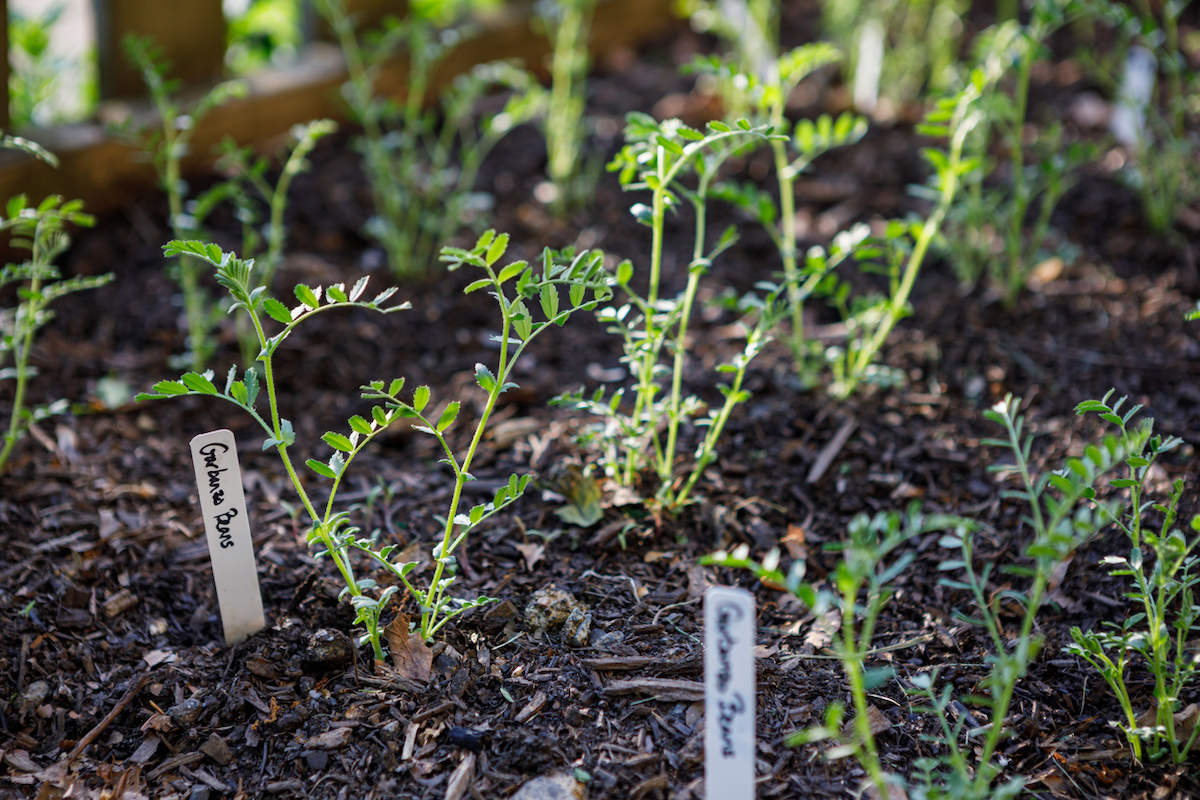
Watering Chickpeas
Chickpeas like the soil to be evenly moist at all times—approximately 1 inch of water per week, or 2 inches in hot weather and climates. However, they should not be watered from overhead; getting their leaves wet can result in fungal diseases or cause flowers and pods to fall off.
They require more water during pod production for the best yield. Production can decrease if they don’t receive adequate water; however, they do not like soggy soil.
Fertilizing Chickpea Plants
As a legume, chickpeas are among the nitrogen-fixing plants. Any fertilizer used on them should be higher in phosphorus, potassium, and micronutrients than in nitrogen. Too much added nitrogen will result in the production of foliage instead of pods.
A powder or granular fertilizer of 5-10-10 at planting can be beneficial, but chickpeas may not need any fertilizer at all if grown in nutrient-rich soil. Adding aged compost before planting and a midseason side dressing of compost can be an alternative to using fertilizer.
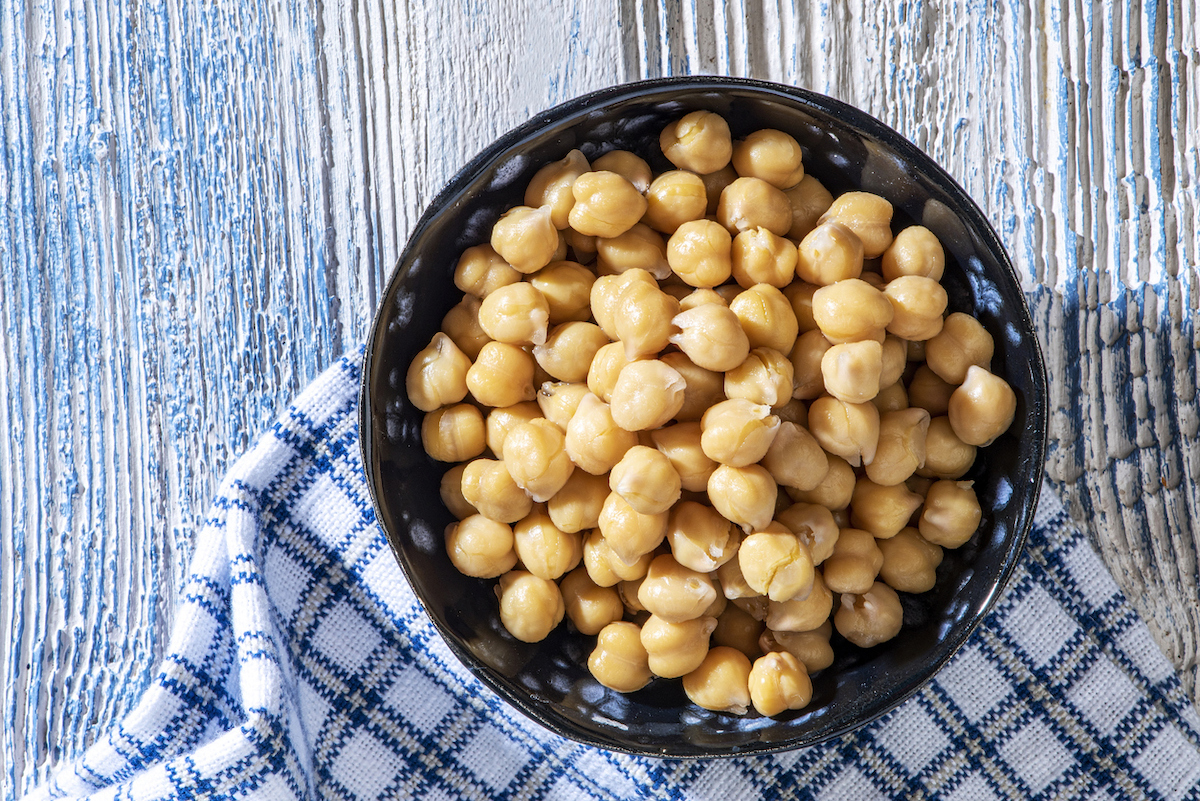
Safety Considerations
Chickpeas are renowned for many health benefits: regulating blood sugar and blood pressure, boosting bone health, improving heart health, helping to prevent cancer, aiding in weight loss, improving digestion, and improving mental health.
Nevertheless, they contain proteins such as globulin, albumin, and prolamin, which can produce allergic reactions in some people. The beans can also cause gastrointestinal problems thanks to some toxic substances they contain.
Chickpeas can contribute to the formation of kidney stones and the accumulation of uric acid. More commonly, because they’re high in potassium, they can interfere with certain medications, particularly beta blockers.
Potential Pests and Diseases
There are disease-resistant varieties, but most chickpeas can be susceptible to fungal diseases, root rot, wilt, white mold, blight, mosaic, anthracnose, and viruses transmitted by aphids. Often, these are caused or exacerbated by moisture, humidity, and heat. Plant spacing can increase air circulation to alleviate some of these problems. Eliminating overhead watering and adding mulch can also help.
Protect chickpea plants from deer and rabbits. However, most insects don’t bother chickpeas because the “hairy” leaves, stems, and pods secrete malic acid to deter them.
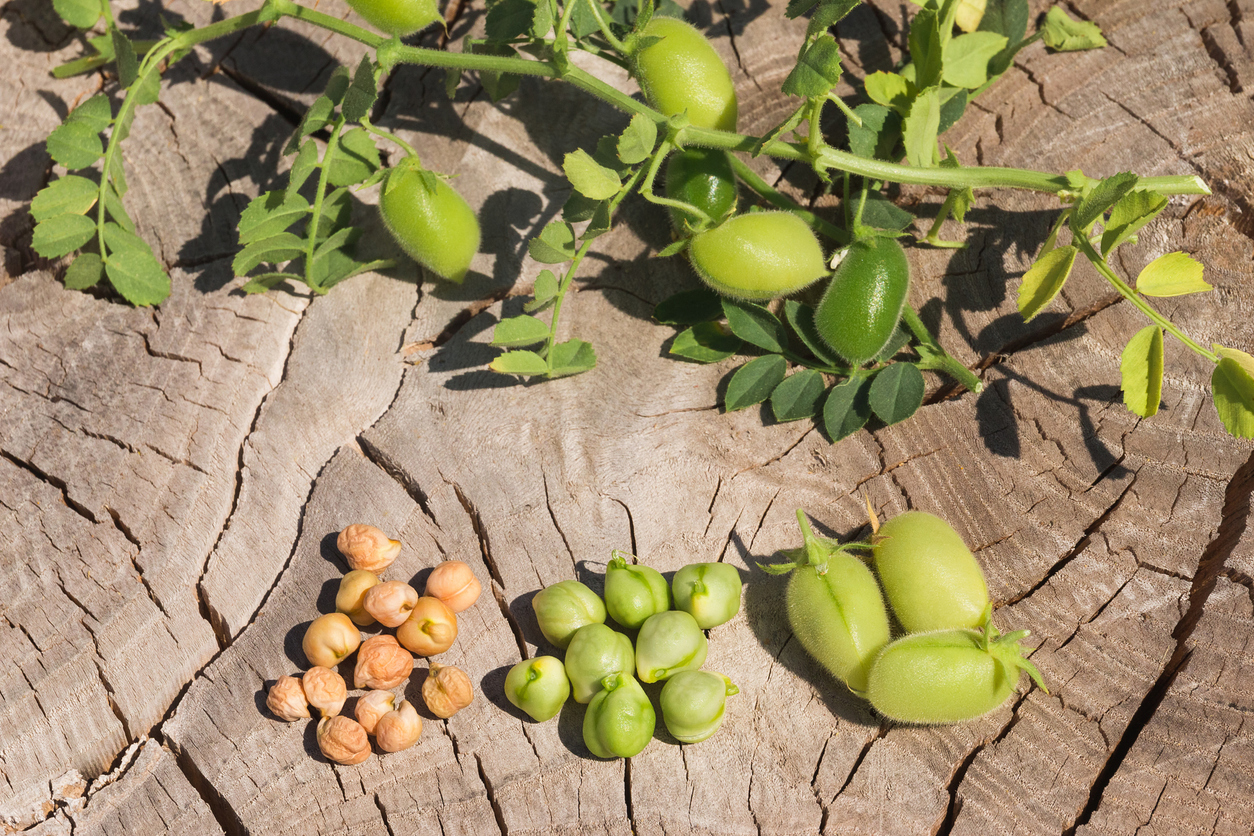
Harvesting Chickpeas
It generally takes about 100 days from planting to chickpea harvesting. Each plant should produce 20 to 50 pods containing one or two chickpeas each.
When is the best time to harvest chickpeas?
Chickpeas have a long growing season, so they are often harvested after other garden vegetables. They are ready for harvesting once the leaves of the plants have turned dry and brown and begun to wither, but before the pods begin to shatter. This generally occurs approximately 100 days after sowing. If you want fresh garbanzo beans instead of dried chickpeas, harvest chickpeas while they’re still green.
How do you harvest chickpeas?
Harvesting chickpeas can be done by using garden scissors to clip off the individual pods, but an easier method is to simply harvest the entire plant.
- Pull the entire plant, including the roots, out of the ground.
- Place the plant on a flat, warm surface to let it dry.
- When the pods crack open, check if the dried chickpeas inside are ready by biting into one; if it barely dents, it’s ready. Alternatively, if they produce a rattle when lightly shaken, they are dry.
- Once the drying process is complete, collect the chickpeas as the pods split and separate them from the rest of the plant.
How do you store chickpeas?
Fresh, unshelled chickpeas can be kept in a plastic bag in the refrigerator for 3 to 7 days. Dried, shelled chickpeas can be kept in a cool, dry place for 1 to 3 years.
Chickpeas can be frozen, canned, or dehydrated. To freeze, first cook them, then lay them in a single layer on a cookie sheet and place it in the freezer for at least an hour before transferring the beans to a freezer bag and storing for up to 3 months. Roasted or dehydrated cooked chickpeas can be stored for a couple of weeks and used for snacking.
Looking for more vegetable gardening? Check out our guides on growing tomatoes, corn, and peppers.
